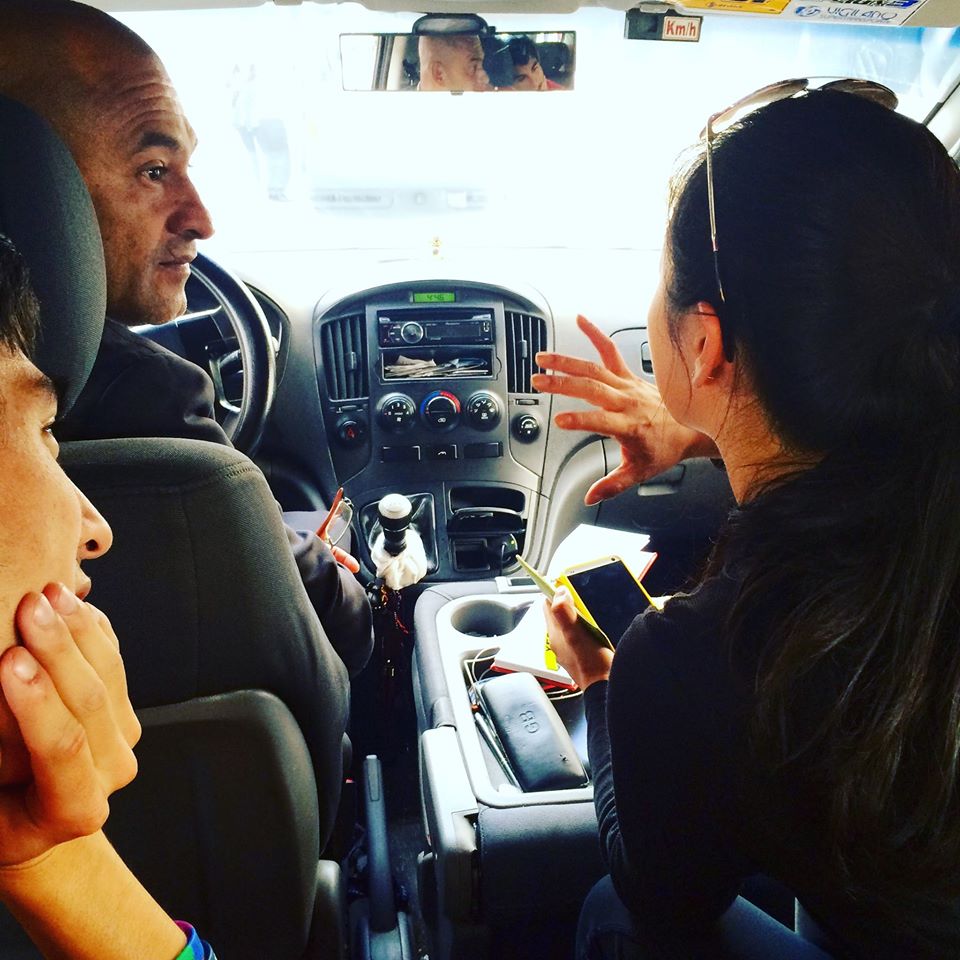Every now and again while traveling you are struck by an experience that reminds you of the incredible and beautiful diversity that we have in the world and how languages and cultures can bridge that diversity in unexpected ways. My first of these such experiences occurred on one of my very first travel adventures, a week-long trip to Brussels, Brugges, and Paris.
On the last night of the final stop in my adventure, at the Notre Dame in Paris, I sat down to eat a picnic dinner that I had bought myself when I serendipitously stumbled upon a Boulangerie (bakery), Charcuterie (meat shop), and Fromagerie (cheese shop) all adjacent to each other. As I was eating, a man sat down a few feet to my right and proceeded to do the same.
After a number of minutes in silence, the man stood up, and, in broken but perfectly intelligible French, asks if I could take a photo of him. I responded in kind, with my own equally broken but somehow intelligible sentences.
Having exchanged photos, we then started talking. The man was from Poland, and had been traveling for a few weeks on his own. I explained my story (studying abroad, first time traveling), and we continued to share stories and experiences.
What was amazing to me about this moment was that he didn’t speak a word of English and I, not a word of Polish. Yet with what little we did have in common, we managed to share a moment that I will never forget.
….which brings me to my recent weekend trip to Bogota.
After climbing Mount Monserrate, my friend and I, along with his friend who had just moved to Bogota, hopped into a cab to head to the Candelaria, the original center of the city replete with restaurants, museums, and government buildings.
Although on a typical ride, the only words we exchanged with our driver were “good morning” or “good evening,” this one was different from the start. Our driver was particularly intrigued by my friend’s friend, a Taiwanese-American who was also fluent in Spanish. After learning that she was Taiwanese, he asked, “What language do they write there, Japanese or Chinese?”
“Uhh…,” she answered looking back at my friend and I wondering where this could possibly be going, “we use Chinese characters.”
The driver’s eyes lit up. He pulled over to the side of the road and, pulling out a pad and paper, proceeded to explain that he wants to get a tattoo of his girlfriend Natalia’s name written in Chinese characters on his arm. And he wanted to know how it would be drawn.
For those of you who are familiar with Chinese, you’ll realize that there’s a small, but important detail — Chinese doesn’t have a phonetic alphabet. You could conceivably transliterate a word, picking a character for each syllable at random from the sets of characters with a given pronunciation, but in 99% of cases, you would end up with something nonsensical. Fine for a temporary tattoo, but maybe not a permanent one.
My friend’s friend spent the next ten minutes trying to explain this to the driver, but he wouldn’t have it. No matter how she rephrased her point, he couldn’t wrap his head around the concept, because all he had ever known is a syllabic language (Spanish). He had (presumably) never encountered a language using logograms, where pronunciations are a by-product of the translation of writing into speech rather than an organic development of the spoken word.
In the end, we convinced the driver to settle on a transliteration of a nickname for Natalia, ‘Tata’, whose transliteration (褟褟) is far less egregious than anything else we could come up with. But the driver wasn’t the only one who left the encounter with an indelible mark — we did too. We’ll never forget that conversation, the wild gesticulations as we tried to convey our point (my friend and I even jumped in despite not speaking a word of Spanish), and least of all, the amazing human desire to connect in spite of vast differences in perspective and understanding.
What about you? What moments will you never forget?


[…] Bought a plane ticket to Colombia for a trip the following weekend. […]